
We’ve all sat through it before…or…stood through it, that is.
As Anand Sahib ends, we stand for Ardaas and collectively reflect on the lives and accomplishments of the Gurus and the 18th century martyrs who gave their lives to preserve our Sikh way of life. Somewhere in between this reflection, and wishing for “Sarbat da Bhala“, we take a bizarre detour in to the “ins and outs” of our community.” Yes…I am referring to the lengthy list of births, birthdays, graduations, anniversaries and other milestones we find in the middle of our Ardaas.
I’m not sure when this practice started; where a member of the sangat would make an offering to the Gurdwara so an “Ardaas” can be done on their behalf. Birthdays are most common week to week, but I have heard more creative ones – celebrating a new job, new car, first mother’s day, wishing someone well on an upcoming exam, or safe travels for someone’s trip to India. Some even taken advantage of this process, by doing an “Ardaas” on behalf of their business week after week – essentially advertising their local store, while they have the entire community’s ear. I’ve raised this issue to the committee that perhaps there needs to be a better way to handle these “community announcements” rather than during Ardaas…I mean, seconds after we recount the martyrs who were cut limb by limb and scalped, we collectively thank Waheguru for Tinku’s new Benz? It just doesn’t seem right.
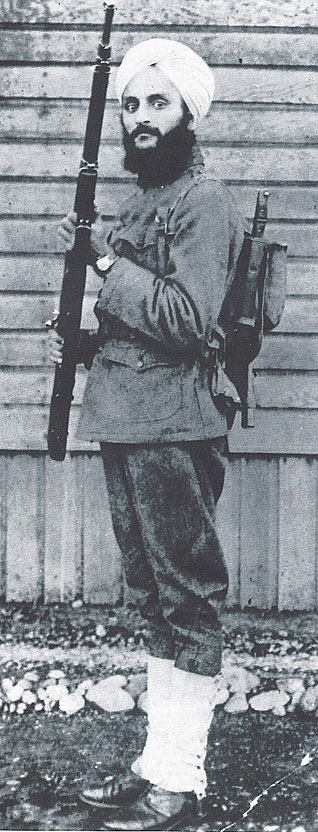 The Sikh Coalition recently announced that three Congressional representatives from New York and New Jersey wrote to Defense Secretary Robert Gates on behalf of their Sikh constituents regarding the Coalition’s “Right To Serve” campaign.
The Sikh Coalition recently announced that three Congressional representatives from New York and New Jersey wrote to Defense Secretary Robert Gates on behalf of their Sikh constituents regarding the Coalition’s “Right To Serve” campaign.
In their letters, Congresswoman Carolyn Maloney, Congressman Rodney Frelinghuysen and Congressman Joseph Crowley asked Secretary Gates to allow Sikh soldiers to serve with their articles of faith intact. The letters cited other Sikhs’ service in the US Armed Forces and in our allies’ militaries to support their argument that these men should be permitted to serve.
This an important milestone in what is likley to be a long and difficult process. In reference to this, I’d like to share a piece I wrote on sikhchic.com shortly before the launch of this campaign, titled – This We’ll Defend [The motto on the official seal of the United States Army. ]
Last fall, I went to an NFL game to watch my team face their arch rival on Sunday Night Football. As we were watching the pre-game warm-up, the gentleman next to me asked “So what do they think of football in your country?” I paused, and politely replied “Well, considering my country is America…we think pretty highly of it.” He attempted to re-phrase his question and after a few awkward exchanges, I yielded, and answered “Oh…you mean my ancestors, they are from Punjab…I’m not sure what Punjabis think of football.” We changed the topic to the upcoming game and ended our conversation.
I run in to these dialogues a lot. As I’ve gotten older, the occasional taunts and racial slurs I receive due to my articles of faith no longer faze me. I can always blame that on ignorance and lack of education. But the exchange like the one at the football game unsettles me. They are typically with people who are both educated and polite, but it is their perception that is troublesome…their presumption, that because of the way I look…I am not an American.
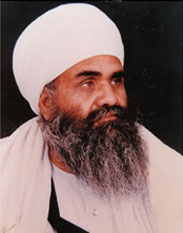 Earlier this week in B.C., hundreds of Sikhs protested the arrival of Mann Singh Pehowa, a granthi accused of rape, misconduct, and blasphemy.
Earlier this week in B.C., hundreds of Sikhs protested the arrival of Mann Singh Pehowa, a granthi accused of rape, misconduct, and blasphemy.
There is, of course, an underlying issue here regarding whether or not Pehowa supports his own dera, has encouraged blasphemy, etc. There is pretty widespread criticism of him, as an individual, as well as of his behavior. I do not want to use this opportunity to get into the nitty gritty of deras and blasphemy, but rather, to focus on the issue of religion and exploitation.
Earlier in the year, Sundari discussed sexual assault in the context of a larger community-level failure to ensure gender equity. Sexual abuse is not new to faith communities, but it evokes jarring feelings of betrayal, condemnation, and deep psychological trauma, both among those who are abused and among their loved ones.
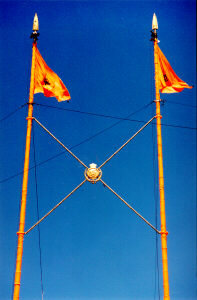 Play along with me here…imagine this Sunday you walk in to your local Gurdwara – remove your shoes, wash your hands, and as you make your way to the main darbar hall, you read the notices on the wall – “Education Committee holding Kirtan Classes Wednesday Night @ 6pm.” Next to that, another sign “Cultural Committee hosts Punjabi night next Saturday!” Further along, you see “Public Affairs Committee presents Interfaith Meeting on Friday.” Then right before you enter the darbar hall, you see…
Play along with me here…imagine this Sunday you walk in to your local Gurdwara – remove your shoes, wash your hands, and as you make your way to the main darbar hall, you read the notices on the wall – “Education Committee holding Kirtan Classes Wednesday Night @ 6pm.” Next to that, another sign “Cultural Committee hosts Punjabi night next Saturday!” Further along, you see “Public Affairs Committee presents Interfaith Meeting on Friday.” Then right before you enter the darbar hall, you see…
Human Rights Committee holding urgent action letter-writing workshop for two Indonesian prisoners of conscience, Sunday after Langar – and don’t forget the “Justice for Darfur” rally this Saturday morning, bus leaves at 8am Sharp!
Whoa! What kind of radical Gurdwara is this? What are the youth up to now? Is this one of those extremist Gurdwaras?
Or…is it the kind of Gurdwara Guru Sahib had intended?
Guru Nanak’s mission was based on the fundamental principle of human rights. We see this not only through his Baani, but throughout significant historical events – whether it was speaking out against the caste system and refusing to the wear the janeoo or his challenge of the tyrannical ruler Babar. Even in his ninth form, Guru Tegh Bahadur gave his life speaking out for a people whose practices he disagreed with, but supported their right to practice religion freely. He gave his life for the freedom of choice and the freedom of religion. There are several amazing stories of the Guru’s activism in the area of human rights and social justice…but strangely, this subject in the context of current events has now become taboo.
Continue Reading »
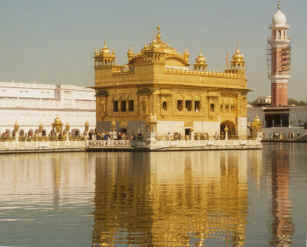 For some Sikhs in Punjab, apparently two Harmandar Sahibs. Or at least that’s the argument between the SGPC and a group of Sikhs. The SGPC argues that a group of Sikhs are building a replica of Harmandar Sahib, and that they stridently oppose any “imitation” gurdwaras (my phrase, not theirs).
For some Sikhs in Punjab, apparently two Harmandar Sahibs. Or at least that’s the argument between the SGPC and a group of Sikhs. The SGPC argues that a group of Sikhs are building a replica of Harmandar Sahib, and that they stridently oppose any “imitation” gurdwaras (my phrase, not theirs).
The Sikhs, who are definitely building a gurdwara (but whether or not it is intended to be a replica is contested), argue that the SGPC is trying to stir up trouble and adopting wedge politics tactics to scramble for power.
At first I read this story and thought to myself, “Wow, that is wacky.” But the longer I’ve reflected on it, the more I have to ask — REALLY???
Ravi Singh Bhalla was elected to the City Council in Hoboken, New Jersey this past week! A city that is less than 1% Asian and predominately white, Hobokens elected Bhalla with 5,810 votes. Bhalla had the highest number of votes amongst the 6 candidates competing for the 3 council seats.
In an e-mail out to supporters, Ravi’s brother, Amardeep Singh, described the bigotry they received during this campaign. He writes:
“… elections are not always for the faint of heart … we were cursed at constantly, literature was ripped out of our hands and stomped on, I was told by someone “I love killing Arabs”, and I was asked whether I “had a green card.”
Despite these attacks, the residents of Hoboken voted for Bhalla because he was a committed candidate who focused on the issues. Bhalla says, “It’s very humbling … it shows that people were focused on what a candidate brought to the table.”
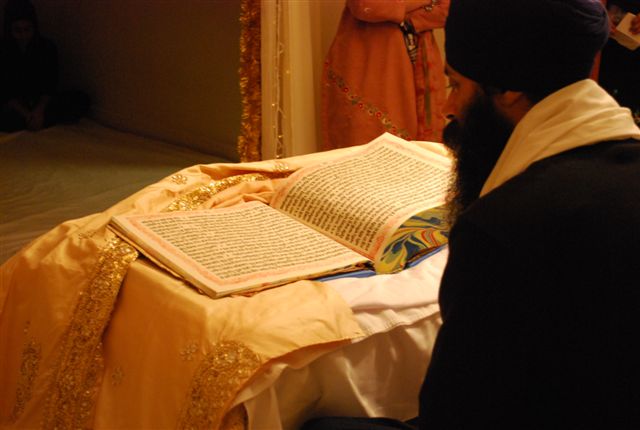 A few weeks back, an article called Outsourcing Prayers [scroll to the bottom], by Khushwant Singh caught my attention. It discussed how people pay big money to religious institutions abroad to carry out services and prayers on their behalf. This “outsourcing” of prayer helps out the “well-to-do” Americans and Europeans who do not have time for worship, while also benefiting cash-starved churches and the local economy of these remote areas. Several religions were mentioned in this article and Sikhs were not spared:
A few weeks back, an article called Outsourcing Prayers [scroll to the bottom], by Khushwant Singh caught my attention. It discussed how people pay big money to religious institutions abroad to carry out services and prayers on their behalf. This “outsourcing” of prayer helps out the “well-to-do” Americans and Europeans who do not have time for worship, while also benefiting cash-starved churches and the local economy of these remote areas. Several religions were mentioned in this article and Sikhs were not spared:
I sought explanation from the head granthi. He told me people from India and abroad sent money for akhand paths to be followed by Guru-ka-langar as thanksgiving or wish fulfillment. I could not comprehend how prayers recited by someone else could benefit a devotee who paid for them.?
There has been much debate in our community on whether paying a professional to do an Akhand Paath on one’s behalf is contradictory to Gurmat. I also remember years ago when the SGPC was “selling” Akhand Paaths on-line. Luckily, outrage from Sikhs all over the world stopped that practice. However, this article got me thinking about Akhand Paaths, and the role it currently plays in our community.
Joint post by Mapleleaf Sikh, Sundari, Jodha, Camille, Phulkari, RP Singh, Reema
It has been 25 years and we remember.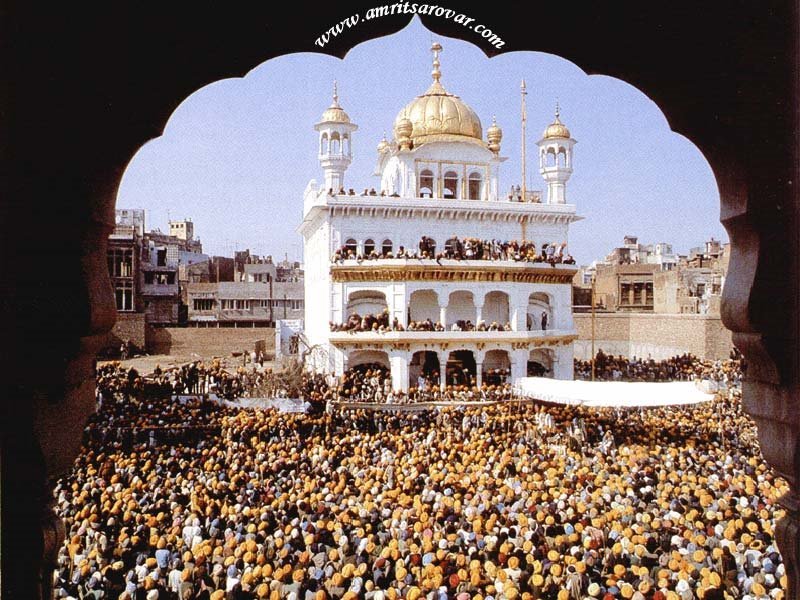
On this day we remember; in this week we remember; in this month we remember; in this year we remember. On June 6th we stopped to remember the recent chapter in the history of the Sikhs.
When the topic of 1984 is brought up, most Sikhs have one of two reactions. For many, it strikes a deep chord. It awakens a memory of what Professor Tatla calls a “critical” event, one of those rare instances that shapes lives far beyond the incident’s physical reach. It is an event that every Sikh knew, even at the time, had marked the fabric of Sikhs’ history and set off a sequence of events that would stay with us indefinitely.
For others, it involves resurrecting the tragic shadow from the past that they would much rather leave behind and forget. They say, “Let’s focus on the future.” “What’s done is done, and we must live in the present and look forward. Memories of the event only serve to create additional hatred and anger.”
We, at TheLangarHall, choose to remember.
We do not hold onto fear, anger, or hatred. We understand that time does not stop. Guru Gobind Singh Ji often spoke in the future tense. We look to the future as well.
However, to look forward, we do not need to forget the past. In Ardaas, along with Asa di Vaar that is to be done as a “community,” we share and take inspiration from Sikh sheroes and heroes.
In order to move forward with dignity, we seek justice and truth, to expose the events of 1984 and state-terrorism in the subsequent decade. We criticize and scrutinize our own roles and failings so that we may learn a lesson from this chapter of our history. We celebrate and decide our own heroes and sheroes, without seeking approval from anyone else.
This is our history. This is our truth. It must be recorded. Atonements and reparations must be made. We will write our own history, unlike many Sikhs in the past. We hold pens and no longer are forced to live in the Lakhi Jungle. We will not let others write our history. It is our history; it is about us, by us, and our perspectives will be heard.
[For background information on events leading up to Operation Bluestar, see chronology and resources on Ensaaf‘s site.]
Below, we share with you, why each of us individually remembers.
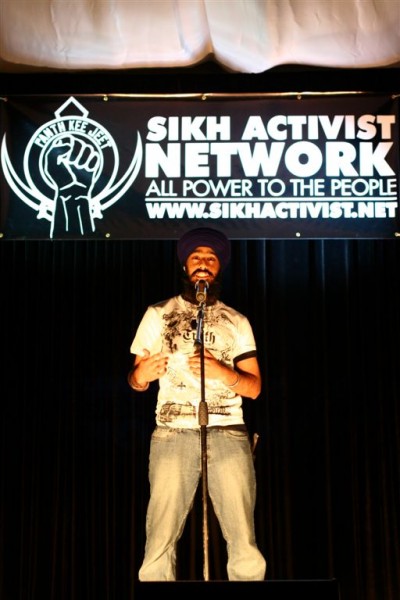
It is often said that a revolution begins not with the sword but with the pen. However, last Friday night in a packed banquet hall in the Toronto suburb of Malton, I witnessed a revolution begin with the microphone.
At an event entitled “When Lions Roar”, fantastically organized by the Sikh Activist Network, one young artist after another got on to the mike and paid homage to the lives destroyed in 1984. I was blown away by the talent and passion displayed by the performers. Through the art of spoken word, music, and action, each of the 26 acts put a different face on the impact of June 1984. They were all unique in their perspective, but all shared one common thread: 1984 is just too important to forget.
Over 1000 people gathered to attend the 4+ hour event. They covered the entire spectrum of Sikh life. This was not your typical retreat and kirtan crowd. In fact, the diversity of performers and audience has challenged me to rethink my stereotypes about who cares about 1984 and the future of the Sikh panth. Individuals that I would have never suspected of having even a passing interest in Sikhi or the Sikh community, would come up to the mike and speak with such energy, insight and emotion. They often reduced me to tears. And most amazing was the fact that almost all of them weren’t even alive in June 1984.
For a thirty-something guy like me who has always considered myself part of the “youth”, it was indeed a little bit humbling to realize that, while I’d probably still be the youngest guy at a Youth Akali Dal meeting, I’m now probably a generation or two above the youngest Sikh leaders. Which means me and my fellow Generation X-ers need to spend less time trying to do it all ourselves, and more time using our resources to enable the next wave of younger Sikhs to establish their own voice and institutions. We were the first generation coming through the diaspora, with little support from our elders. However, we can make it easier on our younger brothers and sisters. We can provide them seed funding to start their dreams, connect them those that can help them along the path, and help coach them through their challenges.
As you’ll see from the videos and photos, the next generation has indeed stepped up, their language of change is hip-hop and I think they’re gonna be alright.
Click through for videos and pictures.
In remembrance of the 25th anniversary of the Darbar Sahib attack, I’m re-posting a piece I had written for sikhchic.com‘s “1984 & I” series:
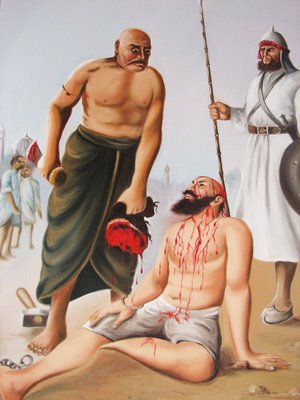
This Is Who We Are
Years ago, I was giving a local church group a tour of our Gurdwara. While I was showing them around the langar hall and explaining the history and significance of langar, I noticed that I was losing my audience. It took me a second to figure it out, but it appeared they were fixated on one of the images on the wall. It was the painting we’ve all seen of Bhai TaruSingh being scalped and blood running down his body. I’m not sure what shocked them more – the graphic painting itself, or the five-year-old boy sitting beneath it, quietly eating his meal.
For just a second, I put myself in their shoes. I looked around the room and saw pictures of Sikh martyrs from the 18th century – a man being boiled alive, a person being sawed in half, two little boys being bricked alive, and an old man with his fingers getting chopped off. And I thought to myself…is this really necessary, the depiction of these scenes in these surroundings?
I started to wonder: are these images really what we want to convey to our visitors? Shouldn’t we find something that depicts universality and love for humanity? Especially after 9/11, shouldn’t we be displaying a softer image of Sikhs? After all, this dining area is a place for us to share a common meal, and little children play down here, for God’s sake! Is this really appropriate?
But then it dawned on me …
This is who we are.
The Sikh Gurdwara is our community center. It is where we turn in times of fear (many Sikhs rushed to the Gurdwara after 9/11); it is where we turn in times of defense (the Battle Of Amritsar in June 1984); it is where we turn in times of crisis.
Even some 550 years later the House of Nanak provides refuge to all. As the world turns towards Pakistan and the military actions in the Swat Valley, I post this video from Al-Jazeera to remember the Sikhs in Pakistan and all that are facing dire conditions due to the turmoil.

 As talking heads buzzed with news of President Obama’s nomination of Sonia Sotomayor to the Supreme Court, there has also been a flurry of commentary. Is her selection tokenizing? Is it triumphant? Is she smart enough? Is she nice enough? I don’t think it’s particularly useful to parse the commentary on Judge Sotomayor specifically — a lot of the back and forth parallels and reproduces the tropes that come out in any discussion addressing privilege and remediation.
As talking heads buzzed with news of President Obama’s nomination of Sonia Sotomayor to the Supreme Court, there has also been a flurry of commentary. Is her selection tokenizing? Is it triumphant? Is she smart enough? Is she nice enough? I don’t think it’s particularly useful to parse the commentary on Judge Sotomayor specifically — a lot of the back and forth parallels and reproduces the tropes that come out in any discussion addressing privilege and remediation.
The same day, a relatively lengthy commentary previewed on NPR’s morning edition. It argued that while Obama’s nomination was a triumph (if successful, Sotomayor will be the first woman of color and first Latina on the Court), the President should examine other forms of diversity on the bench. Specifically, he should appoint an LGBT Justice, next.
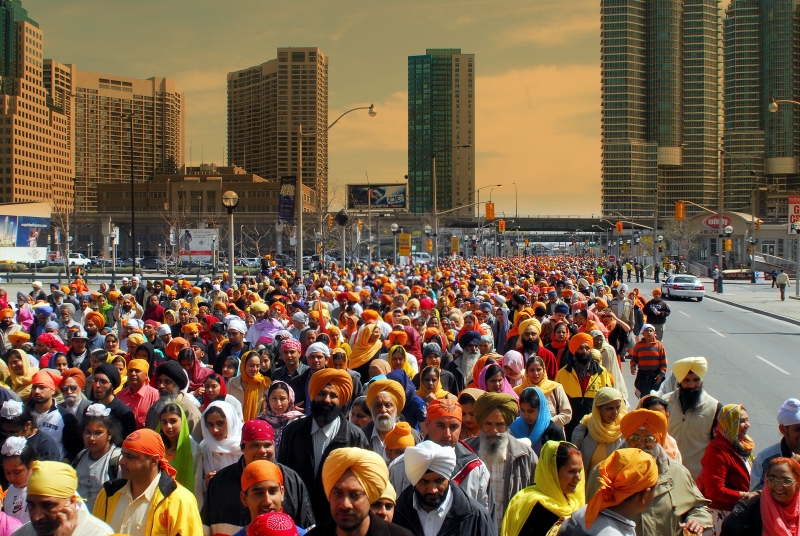 Years ago, I attended a Sikh retreat far from home – outside of the United States and outside of my “normal crowd.” It was interesting to experience Sikh life in a different country…and I think Bono had it right when he said, “We are one, but we’re not the same.”
Years ago, I attended a Sikh retreat far from home – outside of the United States and outside of my “normal crowd.” It was interesting to experience Sikh life in a different country…and I think Bono had it right when he said, “We are one, but we’re not the same.”
The first morning we all woke up at Amrit Vela and joined in Nit-Nem and Shabad Keertan. Everybody was in to it and nobody seemed distracted. It was one of those powerful “Sangat” experiences where you lose yourself and become part of the whole. I loved it! I was so energized after that Deevan and was excited for all the weekend’s activities to come…then came breakfast.
Continue Reading »
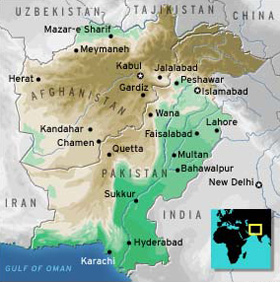 Earlier this month I asked if the Taliban’s rising influence in Pakistan and their removal of Sikhs from the Swat Valley was a harbinger for more extreme religious persecution. This week, two articles caught my eye:
Earlier this month I asked if the Taliban’s rising influence in Pakistan and their removal of Sikhs from the Swat Valley was a harbinger for more extreme religious persecution. This week, two articles caught my eye:
The first depicted multi-religious protests in Kashmir over Pakistan’s inaction in the region. The second implied complicity between the Jawat-ud-dawa (JuD) and the Taliban to use “rescue aid” as a coercive tactic.
The use of “aid” to buy sympathy, garner political favor, or build political support is nothing new, and is described extensively in Machiavelli’s The Prince [source]. Similar concerns were raised in the wake of the Indonesian tsunami, when Muslim communities alleged that Christian aid organizations were forcibly converting orphaned children and the injured by withholding necessary aid. The extent, or veracity, of those allegations was relatively unknown/unquantifiable. Given the Taliban’s extensive campaign-based strategies, in addition to the narrow regional focus of its impact, it should be less difficult to quantify the JuD’s impact.
This past weekend, as I was talking to a Punjabi Sikh woman who came to the United States about 13-14 years ago, I heard how agency and perseverance define the experiences of immigrant women in the United States. She told me about the great new apartment she just got for her family and how the laundry is free. A new apartment building with free laundry, that is absolutely awesome! Her smile, confidence, and enthusiasm were strongly lined with struggle and hard work; although she never directly said it. Her hard work and perseverance resounded clearly and loudly as it lay nestled in her comment about how her children had seen a lot of struggle in their lives. This statement meant that they had witnessed her struggle to provide the basic necessities in life, which means not always having access to the privileges other children gain more easily. I sensed her confidence in her and her family’s work ethic, but also her own guilt of not being able to provide more.
This month, New America Media (NAM) released the results of a historic poll on woman immigrants to America. Often the experiences of women immigrants are not fore grounded in immigration research. They and their children are general viewed as the “dependents” of the sojourner husband/father. Their struggle, as the one mentioned above, are rarely brought to the center of the immigrant narrative.
 Rice University senior, Sukhdeep Kaur, has received the Roy and Hazel Zeff Memorial Fellowship – a $25,000 grant, which will allow her to study issues of human rights and access to justice in areas around the world. The news release states:
Rice University senior, Sukhdeep Kaur, has received the Roy and Hazel Zeff Memorial Fellowship – a $25,000 grant, which will allow her to study issues of human rights and access to justice in areas around the world. The news release states:
A political science and policy studies major with a focus on law and justice, Kaur has a longstanding interest in human rights and justice issues that stems from the violent history between the Indian government and Sikhs in Punjab.
For her fellowship, Kaur will travel to four countries — Chile, Rwanda, Israel and France — to work with minority populations on the issues of access to human rights and justice.
I recently interviewed Sukhdeep and we discussed how she first got involved with human rights. “I knew I wanted to work with law and justice but wasn’t really sure whether to focus on civil rights or human rights,” Kaur said. However, after taking a human rights course her sophomore year and her personal study of the violence toward Sikhs in India in 1984 and subsequent human rights violations, she decided to make this the focus of her field work.
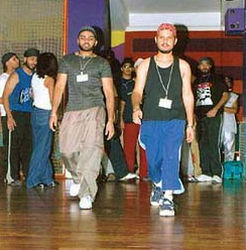 Sometimes (or may be it more often), you read an article that just doesn’t seem to make any sense. My google newsfeeder caught on such article titled: Sikh youth moving away from teachings of Sikhism. The author of the article Harleen Kaur seems to be at all places at once, reporting stories on Chandigarh, Malaysia, Leicester, and New York all on the same day. It does raise eyebrows into the type of reportage it can claim.
Sometimes (or may be it more often), you read an article that just doesn’t seem to make any sense. My google newsfeeder caught on such article titled: Sikh youth moving away from teachings of Sikhism. The author of the article Harleen Kaur seems to be at all places at once, reporting stories on Chandigarh, Malaysia, Leicester, and New York all on the same day. It does raise eyebrows into the type of reportage it can claim.
The story reports:
The young Sikhs seem to be moving away from the teachings of Sikhism largely due to lack of knowledge and faith in their culture and religion.
Hardly anything surprising there. Sikhs have been saying that for years.
The article is trying to promote the Sikh Naujawan Sabha’s Vaisakhi-fest, but some of the analysis seems off, even bordering on the absurd:
 At the Langar Hall, we’ve covered a number of Sikh candidates’ campaigns for local government office. I just wanted to include a brief update about Ravi Bhalla, who looks poised to become one of Hoboken’s first Sikh city councilmembers as he enters a run-off election next month:
At the Langar Hall, we’ve covered a number of Sikh candidates’ campaigns for local government office. I just wanted to include a brief update about Ravi Bhalla, who looks poised to become one of Hoboken’s first Sikh city councilmembers as he enters a run-off election next month:
While it is clear that Peter Cammarano and Dawn Zimmer will vie for the Hoboken mayoralty on June 9, the provisional ballots may still change the neck-and-neck race to see which of the last three of six council-at-large candidates get into the runoff on that date. […]
As of Tuesday night, it looked like the top six will be as follows:
[1.] Carol Marsh 3,719
[2.] Ravi Bhalla 3,698
[3.] Dave Mello 3,361 [link]
When we last covered this story, Ravi was running as an independent for office. Since then, he joined a “reform” slate and has been campaigning extensively. His success comes as a surprise to some, who don’t understand how a practicing Sikh could get so far…
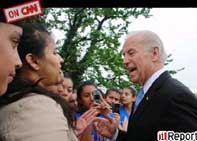
Gurbakhash Kaur Questioning Vice President Joe Biden
One of the major issues affecting the Sikh community is increasing civic engagement in the United States. We often focus on getting more Sikhs to vote and lobby our politicians about the issues affecting our community. This lobbying general pertains to writing letters and signing petitions that ask our community members to move beyond taking pictures with politicians at fundraising events or giving them awards at local melas. This past week, a young Sikh woman, Gurbakhash Kaur, highlighted what it means for a Sikh to be civically engaged. She questioned Vice President Biden “about two Sikhs in the United States Army who were told to cut their hair in order to serve” and Governor Jon Corzine about rising health education costs, while her Sikh peers stood by her side. These handshaking events were not a forum set-up for accountability, but more as photo-ops for the politicians. However, Gurbakhash Kaur was determined to make hand-shaking an opportunity to hold our elected officials accountable to their Sikh constituency.
As a resident of Lodi, New Jersey, she got face-time with Vice President Biden during his visit for a new construction project to widen Main Street and US Route 46. During her questioning, World Sikh News reports that:
Vice President Biden interrupted Kaur to tell her a member of his staff is a Sikh and did not allow her to finish her question. Afterwards, Kaur said, “I want the story to get coverage, as hardly anyone pays attention to our issues . . . we need a lot more legal support and begging and pleading to get our issues addressed.”
Ultimately, Gurbakhash Kaur’s actions are inspiring because she highlights an example of Sikh’s standing up for our rights through self-empowerment. More importantly, she acted through self-organizing rather than taking part in an event organized by other groups to mobilize the Sikh community.
Kuddos to Gurbakhash Kaur for demanding accountability from our elected officials!
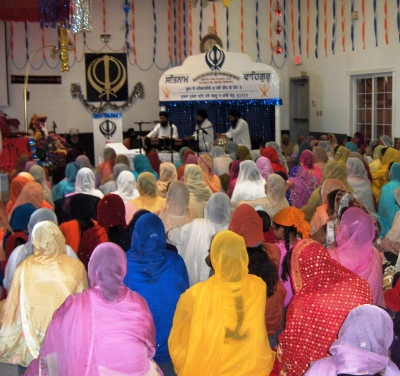 Phulkari’s post a few weeks back got me thinking about Gurdwaras – their origin and the role they play in Sikh society today. History tells us that Guru Nanak Patshah created Dharmshalas in Kartarpur where Sikhs would rise early and meet for Keertan, Veechar, reflection, and Guru-ka-Langar. It was a central element to the ideal society that Kartarpur would become.
Phulkari’s post a few weeks back got me thinking about Gurdwaras – their origin and the role they play in Sikh society today. History tells us that Guru Nanak Patshah created Dharmshalas in Kartarpur where Sikhs would rise early and meet for Keertan, Veechar, reflection, and Guru-ka-Langar. It was a central element to the ideal society that Kartarpur would become.
Over a century ago, Sikhs first arrived in North America – working at lumber mills, railroads, and as migrant laborers. They settled their families and chose to establish Gurdwaras (as early as 1908 in West Vancouver, BC and 1912 in Stockton, CA) to preserve both their spiritual and cultural roots in the land far from their history.
Now with hundreds of thousands of Sikhs in North America and the needs of our communities growing, the Gurdwara has expanded the services it offers far beyond its humble beginnings. Many Gurdwaras have Khalsa schools and libraries. Others plan for fitness centers, basketball courts, and healthcare clinics. One of the local Gurdwaras here hosts an annual Panjabi cultural show and mela, with weekly Giddha and Bhangra practices held at the Gurdwara facility itself. The North American Gurdwara has become not only a spiritual center, but also a community center, serving all the needs of the Sikh and Panjabi population.
On the one hand, I like having a Gurdwara as the center for our community’s activity. Although not all people have an initial interest in Sikhi, all these other events and programs at least keep people coming. And even a short “ritualistic” trip to the Gurdwara could develop in to something more. On the other hand, I can’t help but wonder…are we asking too much from our Gurdwaras?
With such different and competing interests, leaders fight for position so they can make their agenda the focus, and control Gurdwara resources accordingly. This drives much of the political drama and power struggles that surround our Gurdwaras today. As a result, many programs (such as Khalsa schools) end up mismanaged, poorly resourced, and inefficient.
Secondly, with all the programs our Gurdwaras offer, I question – are we taking away from the primary purpose of the Gurdwara…learning Gurmat (the Guru’s way)? How well do our Gurdwaras focus on Simran and Veechar? How well do our Gurdwaras connect the youth with the Guru’s message? What about services for non-Panjabi speakers or introducing non-Sikhs to our faith? What about programs emphasizing Sikh culture – like Gatka or Gurmat Sangeet? Are our Gurdwaras really institutions for learning? If the answer is less than perfect, shouldn’t we re-prioritize and change the focus of our Gurdwaras?
Many Gurdwaras serve small communities in rural areas where limited resources force the Gurdwara to serve multiple purposes. However, in larger communities, where resources are plenty – should we consider separating out our organizations? Maybe create separate Punjabi societies, Khalsa schools, clinics, and even Sikh community centers that focuses on outreach, youth counseling, and seva projects?
Perhaps under separate structures and management, these organizations will be able to thrive and meet their goals more efficiently with less resistance. And with our community’s growing needs, why not grow our presence with more diverse organizations?
Thoughts?
